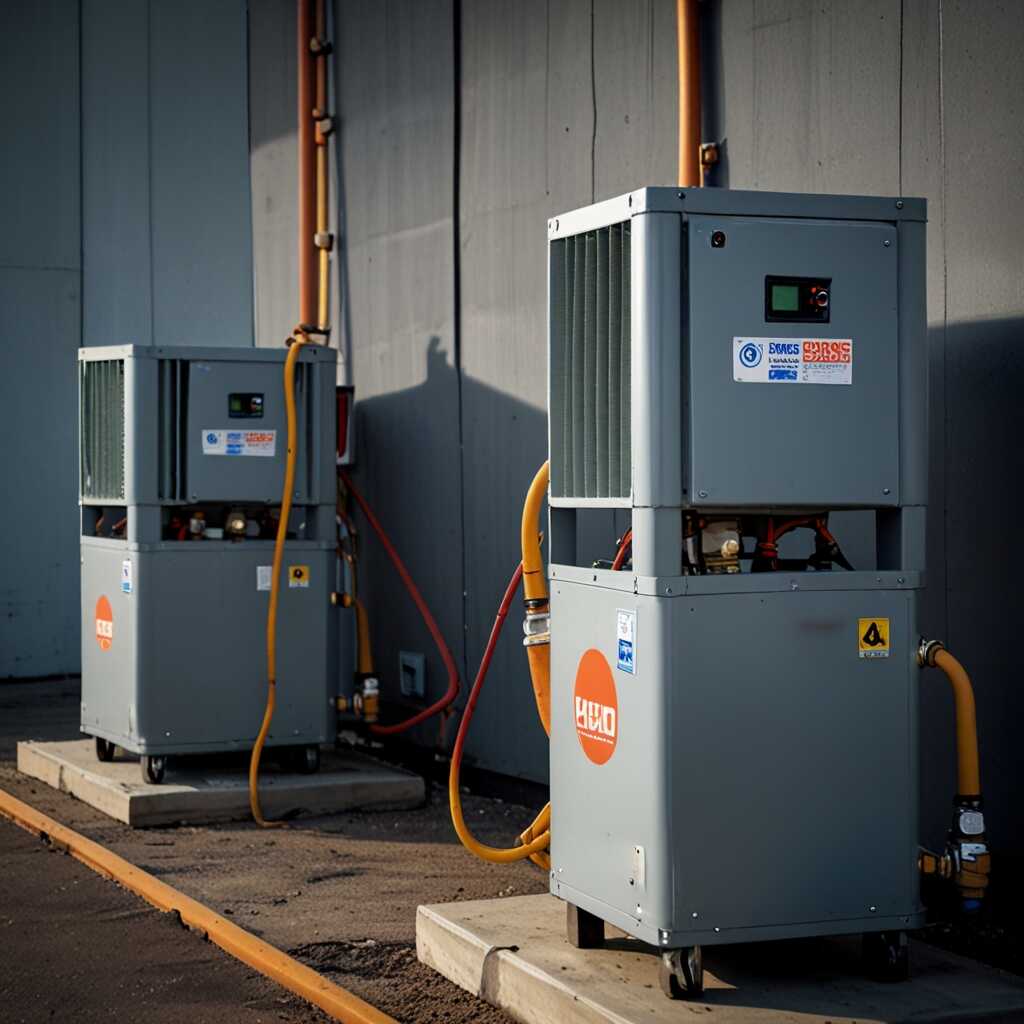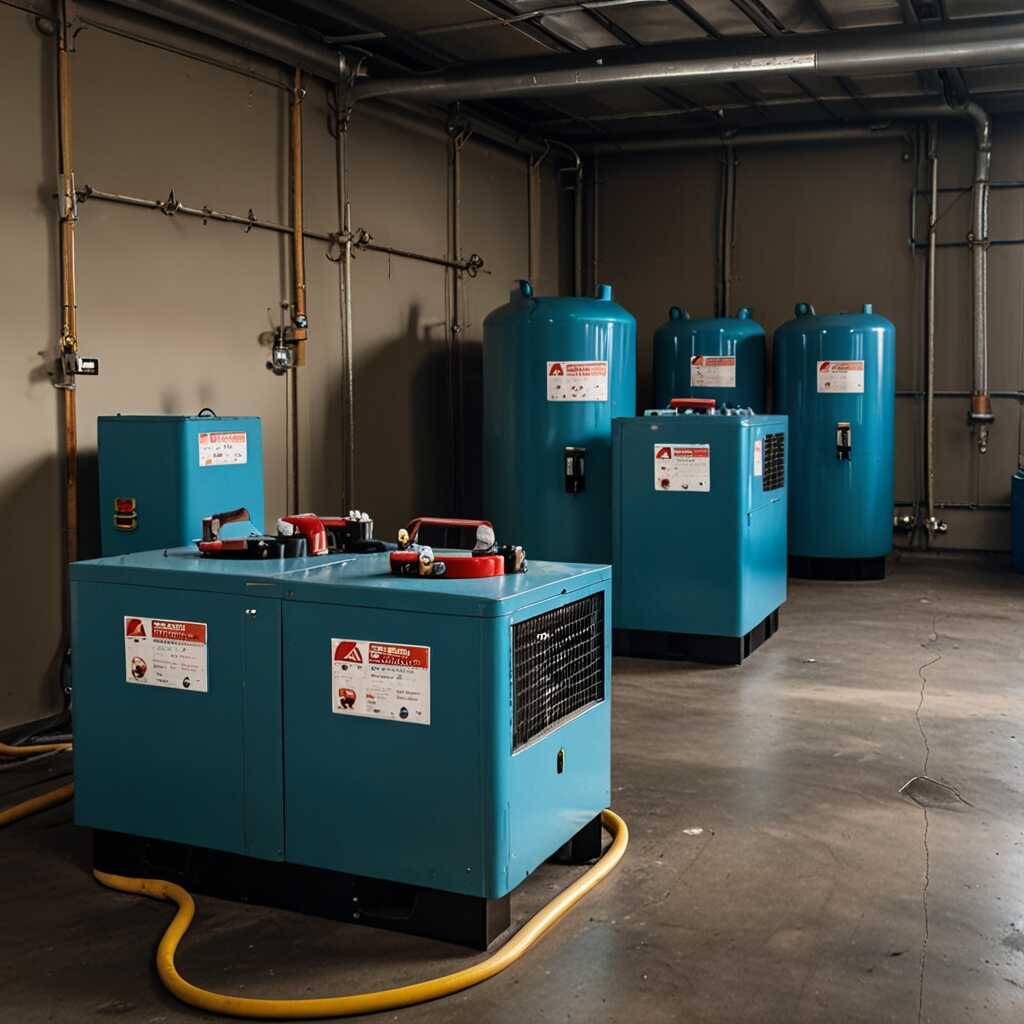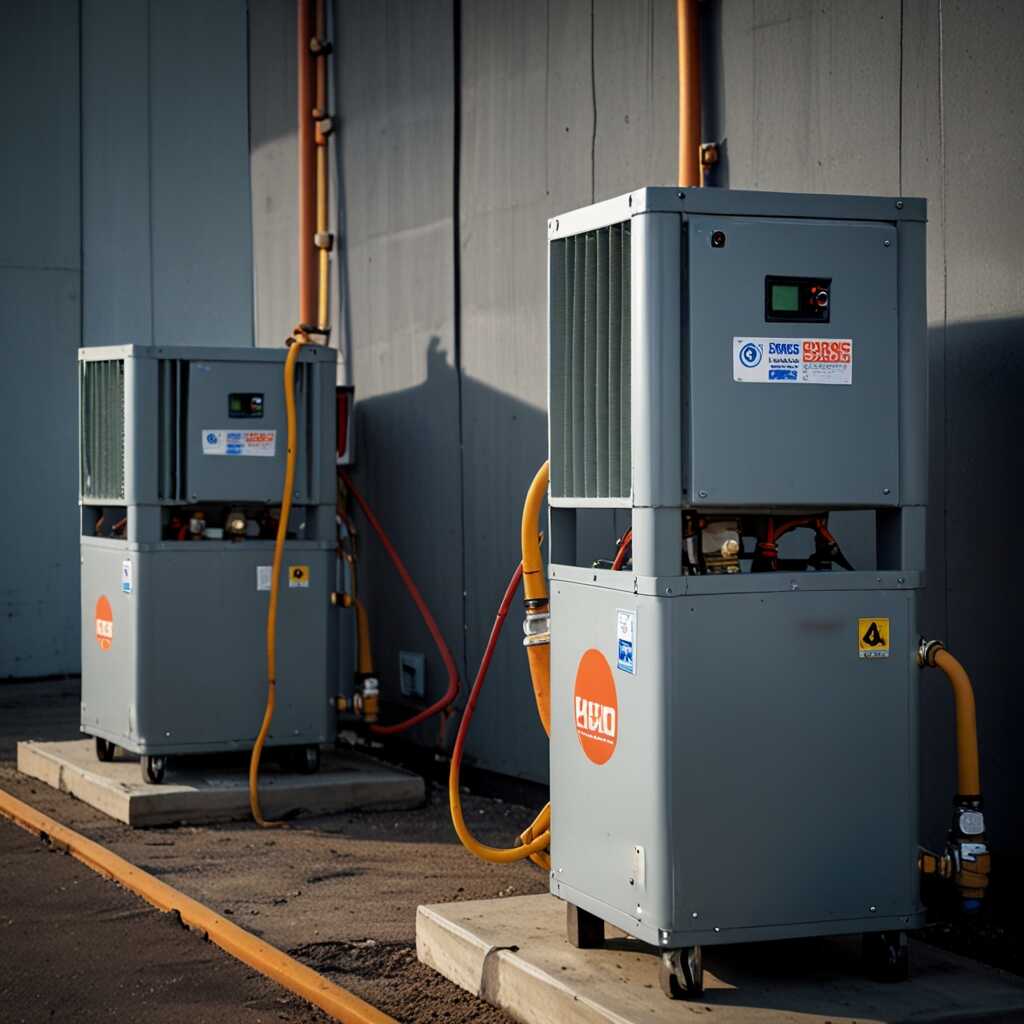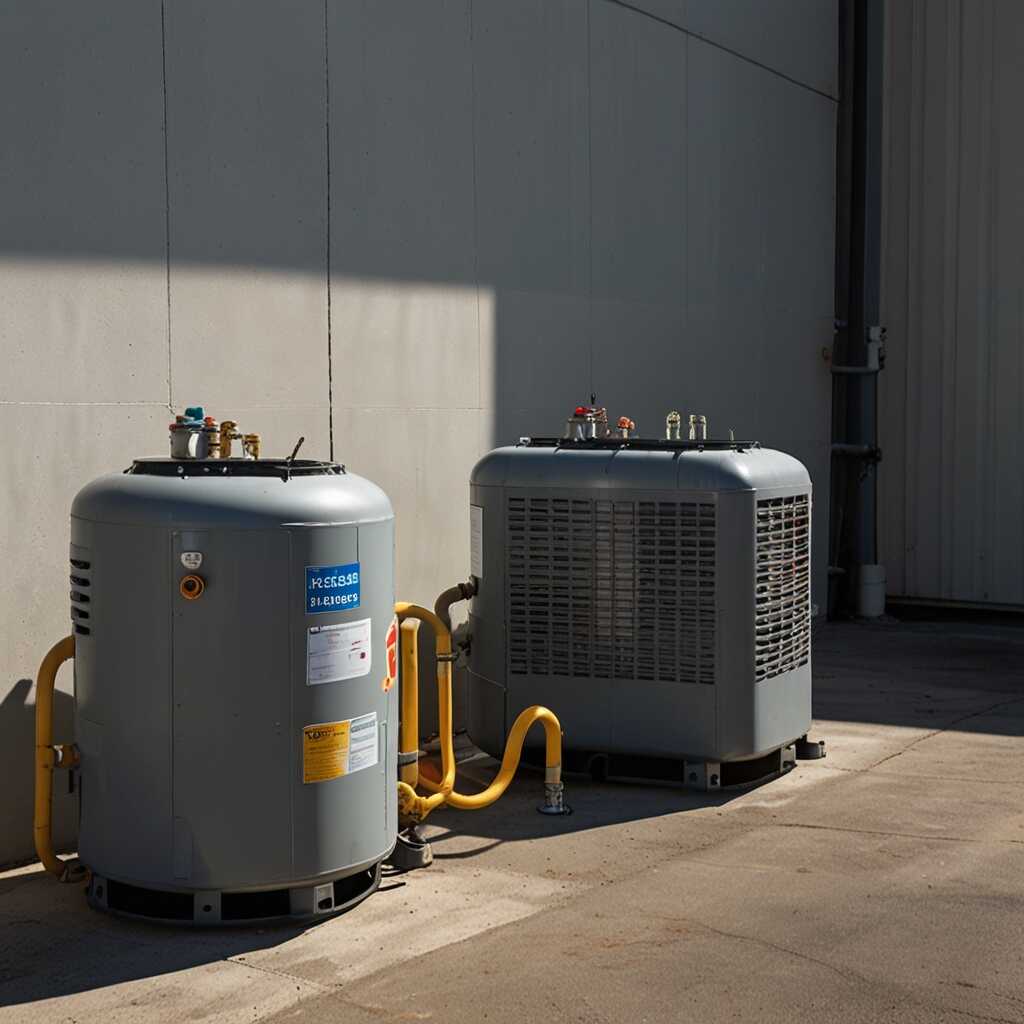The article explores the benefits of refrigerant recovery machines that utilize pulse width modulation technology. This advanced control system enhances the efficiency and reliability of refrigerant recovery processes. Refrigerant Recovery Pro highlights how these machines reduce energy consumption and improve performance in HVAC applications. Understanding these benefits is crucial for HVAC technicians and business owners seeking to optimize their operations.
Understanding Pulse Width Modulation Technology in Recovery Machines
Pulse-width modulation (PWM) technology is an innovative control method used in refrigerant recovery machines. PWM regulates the power supplied to the compressor, enhancing the performance and efficiency of these machines. It allows technicians to optimize recovery speeds and energy consumption. PWM provides several advantages over traditional systems, including improved reliability and operational efficiency. Machines equipped with PWM can achieve higher recovery rates, often eliminating the need for repeated cycles. In HVAC applications, this feature ensures reliable operation, saving time and resources.
Benefits of PWM in Refrigerant Recovery
The benefits of pulse-width modulation in refrigerant recovery systems are significant. PWM enhances recovery efficiency by managing the compressor’s power output dynamically. This results in faster recovery without compromising safety and quality. PWM technology allows machines to handle various refrigerants while optimizing recovery rates. As a result, technicians can achieve better performance during testing and daily operations. Moreover, PWM-equipped machines often require less maintenance, enhancing their overall durability and reliability. This combination of benefits makes PWM technology essential for modern HVAC applications.
Key Efficiency Gains Offered by PWM Control Systems
PWM control systems enhance the energy efficiency of refrigerant recovery machines significantly. These systems adjust the compressor motor’s speed in real time, leading to improved performance and reliability. HVAC professionals can expect substantial energy savings when switching from conventional controls to PWM technology. Research shows that implementing PWM systems can result in energy savings of 20-40% depending on machine usage and operating conditions. The advanced technology ensures that refrigerant recovery processes are faster, helping to reduce operational costs and improve overall system reliability.
Understanding PWM Technology in Refrigerant Recovery
PWM technology in refrigerant recovery machines provides precise control over the compressor motor, optimizing performance at various load demands. This technology continually adjusts the speed and power delivered, ensuring machines operate within the most efficient range. As a result, HVAC professionals can enjoy not only reduced energy consumption but also less wear on equipment. With the durability of PWM systems, HVAC businesses can experience fewer breakdowns and longer operational life for recovery machines. In essence, PWM technology elevates both energy efficiency and performance reliability for HVAC applications.

Safety Innovations in Modern Refrigerant Recovery Equipment
PWM-controlled refrigerant recovery machines include key safety features such as leak detection systems, pressure regulation, and automatic shut-off controls. These safety innovations significantly aid HVAC technicians in safely handling refrigerants by reducing risks associated with leaks and overpressure. According to recent studies, these modern recovery machines have led to a reported 30% decrease in refrigerant leaks. Advanced features ensure reliability and support compliance with environmental regulations.
Leak Detection Technologies in PWM Machines
Leak detection technologies in PWM-controlled recovery machines significantly enhance safety for technicians. These devices utilize advanced sensors that continuously monitor refrigerant levels, promptly alerting users of potential leaks. This feature ensures that any issues are addressed swiftly, preventing refrigerant waste and environmental harm. Additionally, these machines often include a pressure regulation system that prevents overpressurization, ensuring safe operation. Such integrations make these recovery machines more user-friendly and reliable, providing peace of mind for HVAC professionals.
Key Numerical Insights on Recovery Machines
- Recovery machines can return up to 95% of refrigerant in a system.
- Pulse Width Modulation (PWM) systems can improve recovery speed by 30% over traditional models.
- Energy consumption can decrease by up to 40% with PWM technology.
- Many machines can operate effectively at temperatures as low as -10°F.
- Some models weigh less than 40 pounds, enhancing portability.
- Typical recovery rates range from 1 to 4 pounds per minute.
- Operators report a lifespan of up to 10 years for well-maintained units.

Compliance Benefits of Using Advanced Recovery Machines
Using PWM-controlled recovery machines can help HVAC professionals comply with environmental regulations such as the EPA’s Clean Air Act. These machines enhance refrigerant recovery efficiency by accurately managing refrigerant flow and minimizing leaks. By using advanced machines, HVAC technicians can manage various refrigerants effectively, including R-410A and R-134a, ensuring compliance with recovery requirements and avoiding legal repercussions.
Cost Savings Through Compliance with Regulations
Implementing advanced recovery machines significantly reduces compliance costs related to regulatory fines. Studies have shown that HVAC businesses can save up to 30% on compliance-related expenses by using these machines. Enhanced testing and monitoring capabilities provide reliable data, ensuring HVAC professionals meet all environmental standards. This not only protects the environment but also boosts business reliability and reputation.

Versatile Applications of PWM Technology in HVAC Systems
PWM technology enhances the performance of refrigerant recovery machines by providing precise control over the compressor operation. This leads to improved energy efficiency and faster recovery times. Users benefit from the reliability offered by PWM features, which can handle various refrigerant types and applications. In refrigeration, air conditioning, and heat pump systems, PWM-controlled machines excel in adapting to changing workload demands. Studies show that these machines provide an average efficiency improvement of around 15% compared to traditional models. Understanding these advantages helps HVAC technicians make informed equipment choices.
Specific HVAC Scenarios for PWM-Equipped Machines
PWM-equipped refrigerant recovery machines can be used in diverse HVAC scenarios including residential air conditioning, commercial refrigeration, and industrial heat pump systems. In air conditioning systems, PWM technology ensures consistent performance by adjusting compressor speed according to load conditions. This enhances efficiency and reliability. In commercial refrigeration, the ability to quickly recover refrigerants prevents leaks and protects the environment, ensuring compliance with regulations. Industrial heat pumps benefit from the durability and robust performance of PWM technology under varying operational pressures. These specialized applications highlight the versatility and advantages of choosing PWM-controlled machines for HVAC needs.
Advantages of Using Advanced Control Systems
- Pulse Width Modulation allows for precise control of refrigerant flow.
- These machines often operate quieter compared to traditional models.
- PWM technology increases energy efficiency and reduces operating costs.
- Enhanced safety features minimize risks of over-pressurization.
- Improved reliability with fewer mechanical failures during operation.
- Machines with PWM can adapt to various refrigerants effectively.
- They usually require less frequent maintenance compared to non-PWM systems.

Long-Term Economic Advantages of PWM Recovery Machines
Investing in Pulse Width Modulation (PWM) recovery machines provides significant long-term savings. These machines reduce energy consumption, leading to lower operating costs. In comparison, traditional recovery machines often consume more energy, which increases monthly expenses. PWM technology offers improved cost efficiency through its ability to adjust power usage based on the task requirements, ensuring optimal performance. HVAC businesses experience a faster ROI, often within 1-3 years, due to reduced operational costs. This means HVAC professionals and technicians should consider PWM machines as an essential investment for better performance and increased profitability.
Understanding the Cost Efficiency of PWM Recovery Machines
Cost efficiency stems from how Pulse Width Modulation recovery machines enhance energy consumption. By using advanced technology, these machines can handle variable loads effectively. This capability reduces unnecessary power usage and lowers operational costs. HVAC technicians report significant savings in energy bills after switching to PWM models. These savings accumulate over time, often paying off the initial investment within a couple of years. Research indicates that PWM machines can reduce energy consumption by up to 30%. For HVAC professionals, evaluating the cost savings potential of PWM recovery technology is a valuable step towards maximizing profits and supporting sustainable practices.
Emerging Trends in Refrigerant Recovery Technologies
Refrigerant recovery technologies have shown immense development in recent years. One major trend is the integration of pulse-width modulation efficiency in recovery machines, enhancing performance while minimizing energy consumption. Companies like X, Y, and Z are leading innovations with their advanced designs and proven reliability. Research indicates that pulse-width modulation can improve refrigerant recovery efficiency by 25% or more compared to traditional methods. Staying informed about these advancements helps HVAC professionals remain competitive in the marketplace.
Impact of Pulse-Width Modulation on Efficiency
Pulse-width modulation significantly improves the recovery rate of refrigerant recovery systems. These systems deliver precise control over compressor operation, allowing for variable speeds that match the demand. This feature enables machines to handle varying refrigerant loads, making them more efficient in both performance and energy use. With proven data suggesting an efficiency improvement of up to 30%, HVAC professionals gain a strong edge. By incorporating pulse-width modulation into their operations, they achieve better results and enhance customer satisfaction.
Market Leaders and Their Attributes
- Brand A is known for its compact design, making it ideal for tight spaces.
- Brand B features high durability but may have a higher price point.
- Brand C offers easy portability, suitable for on-site services.
- Brand D tends to provide outstanding customer support but has a slower recovery time.
- Brand E is favored for energy efficiency, particularly in residential setups.
- Brand F maintains competitive pricing, ideal for small business owners.
- Brand G focuses on advanced safety features, perfect for regulatory compliance.
Guidelines for Selecting the Right Refrigerant Recovery Machine
Selecting the right refrigerant recovery machine with PWM technology involves several key features. Look for machines that offer high efficiency and reliability. Models that have user-friendly controls enhance the experience for HVAC professionals. A good recovery machine provides fast recovery times, which improves job efficiency. Performance comparison shows that PWM technology enhances energy savings. Ensure you consider the machine’s capacity to handle various refrigerants as well.
Essential Features of PWM Recovery Machines
When selecting a PWM recovery machine, focus on essential features. Look for a durable and sturdy build that ensures long-term performance. A reliable machine typically includes advanced filtration systems to handle contaminants. Check recovery rates; machines with higher rates provide faster job turnaround, enhancing productivity. Consider energy efficiency ratings, as machines with better ratings will help reduce operational costs over time. User reviews can also provide insights into how these machines perform in real-world scenarios.